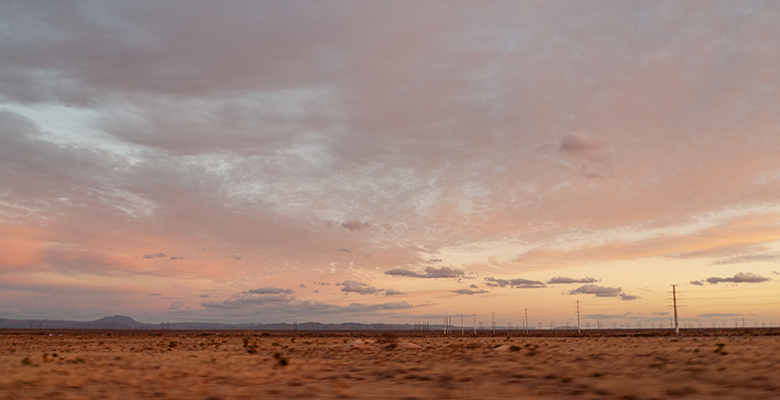by Rich Wright
This article, or something very much like it, originally appeared on NewspaperTree.com in early May, 2008.
There’s this brain drain argument that’s popular with people who have an opinion about El Paso ‘s economic state.
It goes like this: Businesses won’t move here because there’s not an educated workforce, and there’s not an educated workforce because there are no jobs here for educated workers.
It’s a Catch-22 conundrum. A vicious cycle. People leave because there are no jobs, and there are no jobs because the people who would create them leave.
Without these key players, the reasoning goes, El Paso will never reach critical mass, the Gladwellian tipping point after which our fissionable business reactivity will be self-sustaining.
Education is supposed to be the answer. The new medical school is supposed to help relieve our brain drain, by enticing future doctors to stay here long enough to grow roots. Right now we have residents spending up to five years at Thomason, and mostly they move on when their time is up. Maybe the three more years of medical school will make a difference. Maybe not.
When I lived in Austin , shortly after the discovery of fire, there were Ph.D’s flipping burgers at Mad Dog and Beans. The fry cooks at Dirty’s only had Master’s degrees, and those chiefly in English literature. The point is that a lack of economic opportunity will not deter the educated if they really want to stay.
We can’t blame our inhospitable weather for the exodus. In the summer in Austin the temperature and the humidity are both 95. You start sweating as soon as you get out of a cold shower.
In Phoenix , the daily summer temperature varies between 98 and a 108. At two o’clock in the morning it’s still too hot to run. There’s no relief.
Austin has attractions. Barton Springs. A vibrant music scene. Willie Nelson, and dubious Tex Mex delicacies. But how can anyone explain Phoenix ‘s success?
The problem, I think, is that El Paso has never marketed itself as a young person’s town. We’ve never developed the assets. We’ve never cultivated an appeal to the prized 18 to 35 year old demographic. We’ve never cultivated cool.
Cool is a hot commodity for marketers. Marketers try to distill cool to imbue consumer goods, from energy drinks to pop bands, with its elusive essence.
I think we could encourage young people to stay in El Paso if we could convince them that El Paso is cool, and we could encourage people from other places to move here.
Cool is a mindset. It’s an attitude and a perception. Attitudes and perceptions can be self-perpetuating. And not-cool is the attitude and perception a lot of young people have about El Paso .
They say there’s nothing to do in El Paso . A lot of the people who say there’s nothing to do in El Paso move to other cities and don’t do anything there, either.
We have, in recent years, made concessions. At least we have skate parks.
We say we want our young people to stay in El Paso , but we’re not willing to put up with the bother. When those troublesome young people were congregating on Lee Trevino on Sunday nights, we outlawed cruising. Part of the reason for our lack of violent crime is the relative absence of the 18 to 35 demographic, in particular the male half of it.
Past city administrations have tried to appeal to a different psychographic, young families. We’ve pursued a suburban ideal, two car garages and backyard barbecues and 30 year mortgages.
Cool isn’t always the Chamber of Commerce’s problem. Austin ‘s business community, with a college population in excess of 50,000, has economic incentives to appeal to young people. Most of the students at U.T. have leisure time and disposable incomes. Businesses arise to meet the needs of the market.
In El Paso , the youth market is serviced by headshops and tattoo parlors and car customizers, and t-shirt shops in the mall.
Maybe the medical school will spur development of the commercial infrastructure necessary to nurture the 18 to 35 demographic. Maybe, with an influx of medical students, businesses will arise to meet their need for cool. Because there’s nobody in quite as much need of cool as medical students.


I don’t recall that any of those cities mentioned ever marketed themselves as “cool,” or any particular branding going on. I do recall, beginning around 1989, within our own family, our oldest son left El Paso to study at UT, and he never looked back. We have four adult children, and none of them lives here. So, I have to conclude that the brain drain is still very much alive, and El Paso still lacks that “cool” you speak of. But, then, we still lack so much else that might attract young people, with or without families. At the end of the day (and, my long life) I have to ask, “So what?” Why must a city grow? Why can’t a city or a business, for that matter, just stay at a comfortable size, without constant expansion? Why can’t a business survive with just making enough to live on happily and easily?